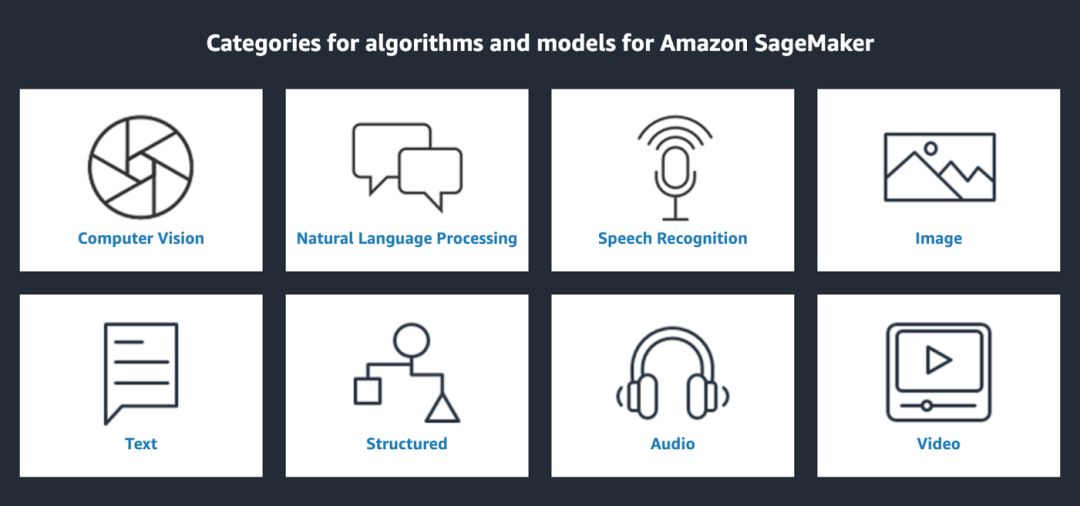Sagemaker is a fully managed service that allows developers to build, train, test, and deploy machine learning models at scale.
Editor’s note: This article is from WeChat public account “ AI Technology Base Camp ” ( ID: rgznai100) by Manish Manalath.

Machine learning is a powerful concept for discovering patterns from data. However, if you’ve tried building a machine model from scratch, you know how challenging it is to design a scalable machine learning workflow.
Using traditional methods to build machine learning models, tagging, training, and fine-tuning parameters are time-consuming. In addition, training models is a tedious process and requires considerable computing power. Because of this, building scalable workflows with complex models, such as reinforcement learning models, is a major challenge for data scientists.
Amazon is trying to solve these challenges with AWS SageMaker.
Sagemaker is a fully managed service from Amazon that provides a rich set of tools to help you easily build, train, test, and deploy models. Sagemaker lets you design a complete machine learning workflow that integrates intelligence into your applications with minimal effort.
Sagemaker is a fully managed service. This means no settings, no installations, and no manual extensions required. Sagemaker offers a complete machine learning suite, which includes an IDE that you can use to collaborate with your team in real time.

Let ’s take a look at the various components of SageMaker and learn how they areHow to work together to help teams build and deliver better solutions for customers.
SageMakerGround Truth
Preparing the correct data set is the first challenge in building a machine learning model. These data sets are usually obtained from different sources and may have different formats. Because the algorithm cannot process the raw data, manual tagging is often required during the data preparation phase. In addition to training models, preprocessing data is where engineers spend the most time.
Sagemaker Ground Truth uses pre-trained machine learning models to automatically label raw data, greatly reducing the time and effort required to create labeled datasets. Over time, GroundTruth has gradually become better by learning to manually create tags.
SageMaker Studio
Sagemaker Studio is a feature-rich machine learning integrated development environment (IDE). You can write, debug, and visualize your models using a single integrated interface.
Sagemaker Studio also provides step-by-step tracking, and you can use pause, replay, and clone steps. This makes it easy to move around in a machine learning workflow to analyze and iterate a single step.
Sagemaker Studio includes the following tools that work synchronously to help you build complex machine learning architectures effortlessly.
SageMaker AutoPilot

Autopilot is the most useful tool in SageMaker. Finding the right algorithm is another big challenge when designing a machine learning model. Given the variety of algorithms for solving machine learning problems, finding the most effective algorithm often requires hours of training and testing.
Autopilot uses pre-trained machine learning models toSolve this problem and find the right algorithm for your data. By providing target columns for prediction, Autopilot will explore different solutions to find the model that best fits your dataset. Once Autopilot has found the right model, you can also choose to extend the model with a custom configuration.
SageMaker Notebooks
If you are familiar with Jupyter Notebooks, SageMaker Notebooks is a Jupyter Notebooks that you can share with others. You can collaborate with your team to build machine learning models in real time using SageMaker Notebooks.
Sagemaker Notebooks are not limited to the initial configuration, which means you can use different hardware configurations to test your machine learning model. When creating a new SageMaker Notebook, you can also choose a different pre-made template.
SageMaker Experiments
To train the model, you must run the data through the model for multiple iterations until you get the best accuracy. This includes trying a variety of algorithms, fine-tuning parameters, adjusting features, and more.
Sagemaker Experiments can store each optimization process as an “experiment” and provide a visual interface for you to browse. Sagemaker Experiments captures the input parameters, configuration, results, and more of each iteration for you to browse and review their performance.
SageMaker Debugger
The accuracy of machine learning models can only be determined after training is complete. But training models is a time-consuming process that can take anywhere from minutes to hours. If you have to change the parameters, you must retrain the model to calculate its accuracy.
Sagemaker Debugger captures real-time metrics during training. The captured verification, confusion matrix, and learning gradients can help you analyze the entire training process and optimize it for higher accuracy without retraining the entire model. Debugger also warns of common issues and offers best practices.
SageMaker Model Monitor
Once a machine learning model is in production, it is difficult to automatically monitor the performance of the model. When the model receives new data from user interaction, a data shift may occur, which will change the base values, such as mean, variance, average, etc. Without proper statistical analysis, it is difficult to infer these problems with traditional methods.
Sagemaker Model Monitor monitors machine learning models in production and alerts you when the model does not perform as expected. By configuration, Sagemaker Model Monitor can generate reports containing general statistics and performance indicators, and can be stored in S3 buckets periodically .
SageMaker Neo
Complex machine learning solutions like autonomous vehicles are built using a separate set of models. These models must make fast, low latency, and highly accurate real-time predictions. Such models take years to train, test, and deploy. Once deployed, it is difficult to update the edgelocations model unless there is a solid reinforcement learning architecture.
SageMaker Neo can come in handy at this time. Neo optimized the model to make it run twice as fast, consuming less than a tenth of the memory, and without any loss in accuracy.
Neo can also compile machine learning models into an executable file and deploy it to the cloud or Lambda edge. Neo also supports the use of AWSGreengrass to wirelessly update edgelocations (distribution nodes, which refers to nodes that Amazon establishes globally and caches content published by source servers. When end users access, data is provided from the nearest node).
SageMaker Augmented AI
The highly accurate machine learning model can better guarantee the quality and accuracy of the data after a certain degree of manual intervention. Amazon Augmented AI (A2I) makes it easy to build a workflow for manually reviewing predictions.
This is especially useful when dealing with low-quality data formats such as scanned documents and natural language text. A2I can be used to improve the prediction results of low confidencePerform manual review, or review forecasts on an ongoing basis.
AWS Marketplace
AWS Marketplace is a digital catalog with thousands of pre-configured software services developed by independent software vendors. AWSMarketplace provides a range of solutions from operating systems to data analysis.

Aws Marketplace also offers a variety of machine learning solutions built, trained, and tested using the AWS platform. You can select an existing model available on the Marketplace and deploy it directly into a production environment. Marketplace solutions are also extensible, and developers can add additional configuration layers before deploying these models to customers.
Summary
If you are a machine learning engineer, when you build a complete machine learning workflow from scratch, Sagemaker will help you greatly reduce the amount of overhead and settings. Sagemaker also offers hosted on-site training to run your training jobs with redundant AWS on-site instances. This can help you save on computing power when training large datasets.
Sagemaker is also well compatible with languages such as Tensorflow and Keras, and can provide a GPU cluster to run calculations in parallel. Without a doubt, SageMaker is a powerful tool in the machine learning engineer’s toolbox. Original link: https://hackernoon.com/amazon-machine-learning-a-deep-dive-into-aws-sagemaker-9mx3zs8